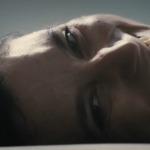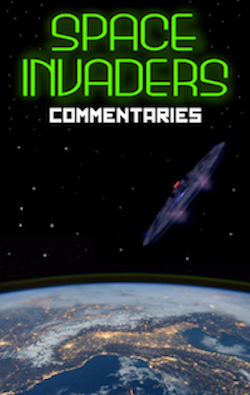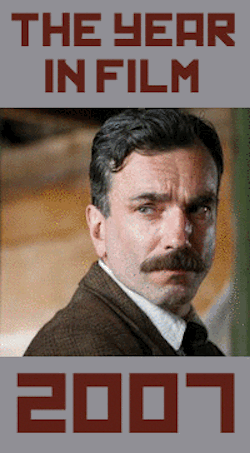Il Buco: Ants from Down There, by David Bax

Michelangelo Frammartino‘s Il Buco is not a documentary, though it often feels like one. Nevertheless, it does open with actual documentary footage, a circa-1960s human interest piece in which a television host rides a window washer’s rig up the side of a skyscraper. We look in at the office workers–some going about their days, others stopping to gawp at the external intruders–but the camera operator also takes a moment to turn around the other way, giving us a panorama of a city seen from above. It’s not new, this idea of climbing higher to gain a better vantage point. But, once it gets to its main event–the exploration of a nearly 700 meter deep hole in the ground by a team of speleologists–Il Buco takes the opposite approach, diving down as far as it can into the earth and wondering if that might not also offer a new perspective, not just on the world but on the kinds of people who choose to spend their time in such places.
Il Buco‘s story recounts a real 1961 expedition to chart southern Italy’s “Bifurto abyss,” one of the deepest caves to have been discovered up to that point. As such, it’s a period piece, reflected in the equipment used by the spelunkers; small live flames instead of flashlights affixed to their helmets bring the cave walls to life with dancing shadows. But, other than that, there’s relatively little to signal the era. Beneath the human-ravaged surface, the world looks pretty much the same no matter the year.
Frammartino strips Il Buco of other signifiers, too. There’s no score and almost no dialogue. This is how the film comes to resemble a documentary. Arguably, that’s in fact what it is, an experiment in recording human action–rappelling, climbing, cooperating–to drive story without speaking.
But to whatever extent Il Buco is a film theory exercise, that’s secondary if intentional at all. In their rare downtime, the explorers are seen watching television. That same passive observance is all Frammartino demands of us, taking in and noting what we see. This is perhaps why the film itself is so quiet. It’s as if it doesn’t want to disturb or interfere while it’s witnessing. It’s an act of fabricated anthropology.
Veteran cinematographer Renato Berta (he’s worked with Jean-Luc Godard, Louis Malle and Jacques Rivette, to name a few) reflects this same passivity with high, distant shots and gentle pans. Il Buco is a beautiful film–shots of the sky as seen from inside the cave are especially striking–but never self-consciously so. It captures beauty instead of imposing it.
In the depths of the cave, the sounds made by man bounce downward and become sonorous, like the voices of an alien race. We say that looking down on people from above makes them look like ants. Il Buco helps give us an understanding of how we appear from a different point of view.




























